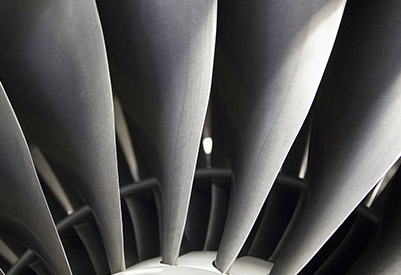When it comes to creating fans for air handling systems, there are many designs and methods your plant can use. The appropriate fan style depends on your needs, and the recommended design will be dictated by the environment, your objectives, and the level of efficiency required.
Fan types include forward-curved fans, backward curved fans, backward inclined fans, radial tip fans, and radial blade fans.
This last category (referred to here as ‘radial blade centrifugal fans’) is a standard configuration that offers several critical benefits while possessing certain drawbacks that may make it inappropriate for specific operating environments.
Are you interested in radial blade fan solutions for your plant? Request a quote today!
What is a Radial Fan?
Radial blade fans (also known as “paddle wheel” or “steel plate” fans) are usually used within industries to move gasses and other processed materials. Radial blade fans are typically high-pressure systems used to handle combustion air and operate well in harsh environments due to their rugged construction.
Here are some of the benefits and drawbacks of this particular configuration.
Benefits of Radial Blade Centrifugal Fans
Radial blade fans commonly feature the strongest structural design in the field. These fans are made to be durable, resilient, and powerful enough to move large amounts of air – made possible by achieving the highest pressures of virtually any industrial fan configuration.
In addition to being powerful, radial blade fans also are very easy to maintain. For facilities concerned about high ongoing maintenance costs – particularly with some more advanced configurations – radial blades can save money in the long run, thanks to how easy it is to keep these fans operational.
Radial blade fans are easy to maintain because of the self-cleaning characteristics most radial blade designs possess. Self-cleaning mechanisms are invaluable because they reduce labor costs and help increase operational longevity.
Also, radial fans tend to be built more solidly than other fans, making them resilient and suitable for harsh environments (as mentioned previously).
Finally, this particular configuration is more affordable, at least initially. Radial blade fan configurations often incur lower initial capital costs when compared to other industrial fan designs. These low-costs means radial blade fans are a solid budget-friendly option for a plant looking to streamline capital outlays at the beginning of a project.
Contact us to learn more about radial blade fan project opportunities for your plant!
Drawbacks of Radial Blade Centrifugal Fans
Radial blade centrifugal fans aren’t without their drawbacks, however.
The main drawback most facilities see in the field is inefficiency. Radial fans tend to have lower efficiency rates when compared to other designs. For environments that require high degrees of efficiency, radial blades may not be appropriate. However, this is often mitigated by the fact that these fan types are better suited for harsh environments. Additionally, radial fans tend to be noisier than other configurations. They also require more space, which may be a deal-breaker for small operating environments.
Finding Radial Fan Solutions
ProcessBarron offers custom fabrication solutions that feature heavy-duty radial blade fans. We construct our fans from a range of strong materials, including carbon steel, high-yield steels, and exotic alloys. These fans are also balanced to ANSI standards and are subject to rigorous testing and finite element analysis to ensure the design is stable and maximizes performance.
Contact our experts for more information on constructing radial blade centrifugal fans for your facility!


